Text
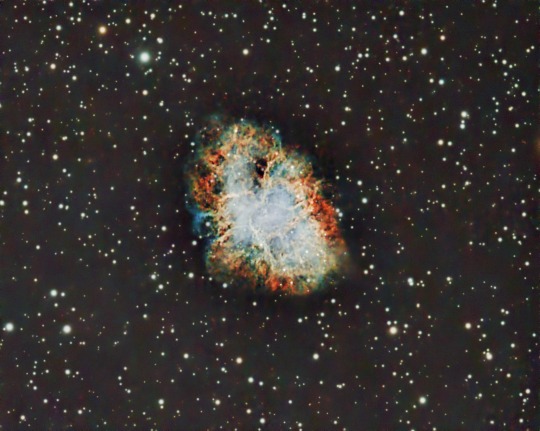
M1 - Crab Nebula
See full resolution image at: https://www.astrobin.com/rejqjs/
The Crab Nebula (catalogue designations M1, NGC 1952, Taurus A) is a supernova remnant and pulsar wind nebula in the constellation of Taurus. The common name comes from a drawing that somewhat resembled a crab with arms produced by William Parsons, 3rd Earl of Rosse, in 1842 or 1843 using a 36-inch (91 cm) telescope. The nebula was discovered by English astronomer John Bevis in 1731. It corresponds with a bright supernova recorded by Chinese astronomers in 1054 as a guest star. The nebula was the first astronomical object identified that corresponds with a historically-observed supernova explosion.
The nebula was independently rediscovered in 1758 by Charles Messier as he was observing a bright comet. Messier catalogued it as the first entry in his catalogue of comet-like objects; in 1757, Alexis Clairaut reexamined the calculations of Edmund Halley and predicted the return of Halley's Comet in late 1758. The exact time of the comet's return required the consideration of perturbations to its orbit caused by planets in the Solar System such as Jupiter, which Clairaut and his two colleagues Jérôme Lalande and Nicole-Reine Lepaute carried out more precisely than Halley, finding that the comet should appear in the constellation of Taurus. It was in searching in vain for the comet that Charles Messier found the Crab Nebula, which he at first thought to be Halley's comet. After some observation, noticing that the object that he was observing was not moving across the sky, Messier concluded that the object was not a comet. Messier then realized the usefulness of compiling a catalogue of celestial objects of a cloudy nature, but fixed in the sky, to avoid incorrectly cataloguing them as comets. This realization led him to compile the "Messier catalogue"
At an apparent magnitude of 8.4, comparable to that of Saturn's moon Titan, it is not visible to the naked eye but can be made out using binoculars under favorable conditions. The nebula lies in the Perseus Arm of the Milky Way galaxy, at a distance of about 2.0 kiloparsecs (6,500 ly) from Earth. It has a diameter of 3.4 parsecs (11 ly), corresponding to an apparent diameter of some 7 arcminutes, and is expanding at a rate of about 1,500 kilometres per second (930 mi/s), or 0.5% of the speed of light.
At the center of the nebula lies the Crab Pulsar, a neutron star 28–30 kilometres (17–19 mi) across with a spin rate of 30.2 times per second, which emits pulses of radiation from gamma rays to radio waves. At X-ray and gamma ray energies above 30 keV, the Crab Nebula is generally the brightest persistent gamma-ray source in the sky, with measured flux extending to above 10 TeV. The nebula's radiation allows detailed study of celestial bodies that occult it. In the 1950s and 1960s, the Sun's corona was mapped from observations of the Crab Nebula's radio waves passing through it, and in 2003, the thickness of the atmosphere of Saturn's moon Titan was measured as it blocked out X-rays from the nebula.
This RGB image is a total of a little under 6 hours of integration over 2 nights (2/18/24 and 2/25/24) consisting of:
- 190 x 60s light frames
- 61 x 120s light frames
- 10 x 180s light frames
Processed in PixInsight using the new GradientCorrection tool (which really helped with the moon-induced gradients on the data taken 2/18).
Celestron C9.25 Edge at F/10
ZWO ASI2600MC Pro Camera
Optolong L-Pro filter
ZWO AM5 mount
Astromania 50mm f/4 Guide Scope
ZWO ASI120MM Mini Guide Camera
ZWO ASIAIR plus controller
0 notes
Text
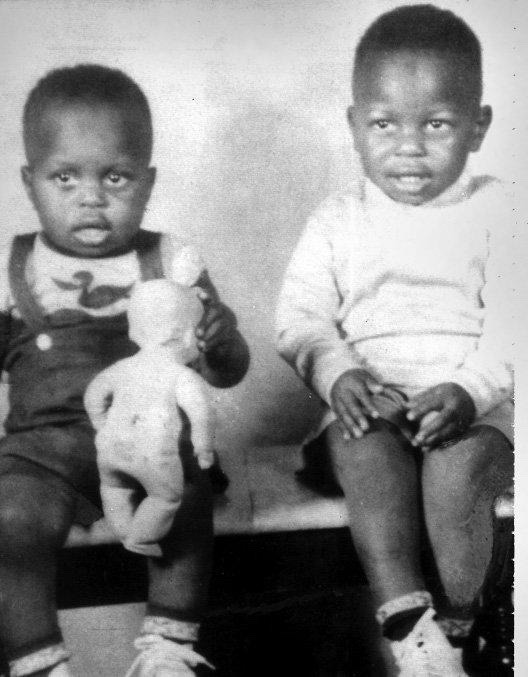
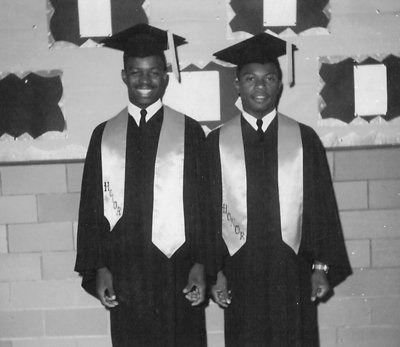

Astronaut Ronald McNair and his older brother, Carl, throughout their early lives. They were born only 10 months apart. Ron was valedictorian of their high school graduating class and they both went on to study at North Carolina A&T (an HBCU research university) in Greensboro.
Carl founded the Dr. Ronald E. McNair Foundation, an organization which supports students in STEM education and fields, after Ron’s death aboard Challenger in 1986.
48 notes
·
View notes
Photo
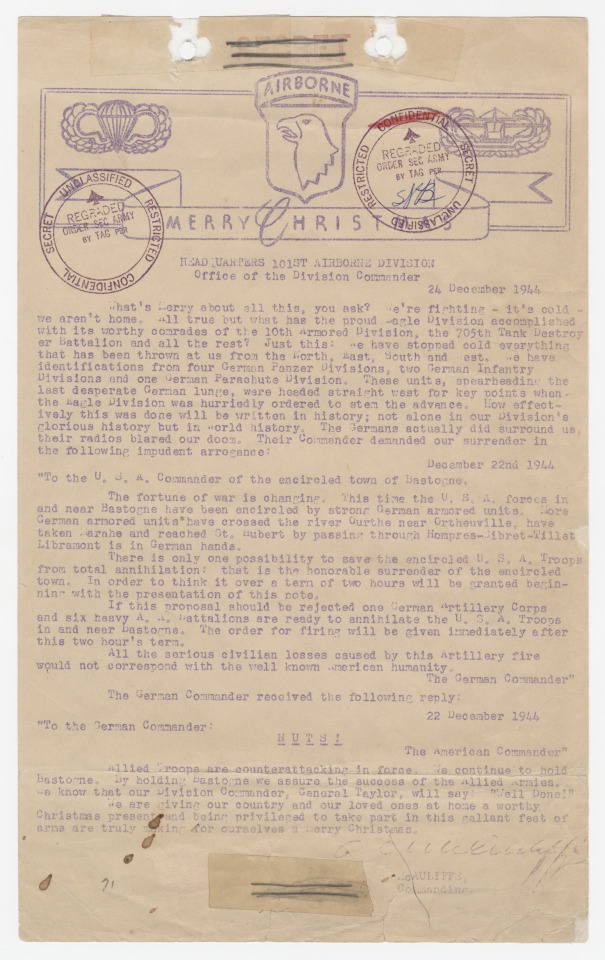
On December 22, 1944, German officers under a flag of truce approached the American lines demanding Bastogne’s surrender. After reading the demand, Gen. Anthony McAuliffe, the American commander in Bastogne, remarked, “Aw, nuts!”
Further discussion failed to improve on his first reaction, and “NUTS!” became his famous one-word response. When the Germans failed to understand, an American officer explained, “in plain English it is the same as ‘Go to hell!’”
General McAuliffe’s December 24 “Christmas Message” to the men of the 101st recounts the German surrender demand, McAuliffe’s reply, and informs them of an American counterattack.
And help was on the way. On December 26, after moving over 100 miles in five days, the 4th Armored Division’s 37th Tank Battalion relieved Bastogne.
By mid-January 1945, Allied troops eliminated the “bulge,” but at a high cost. The U.S. Army had suffered over 75,000 casualties.
82 notes
·
View notes
Text
WHY ARE NONE OF YOU FUCKERS FLIPPING SHIT?!?
NASA HAS DECLARED PLUTO A PLANET AGAIN
333K notes
·
View notes
Photo

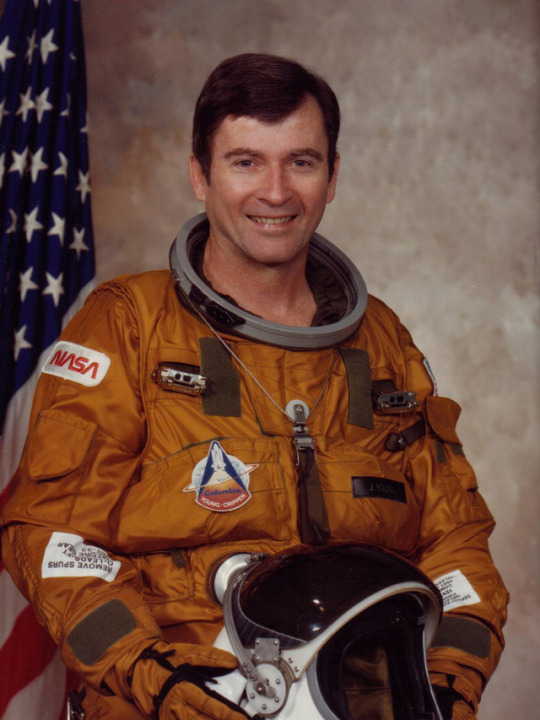
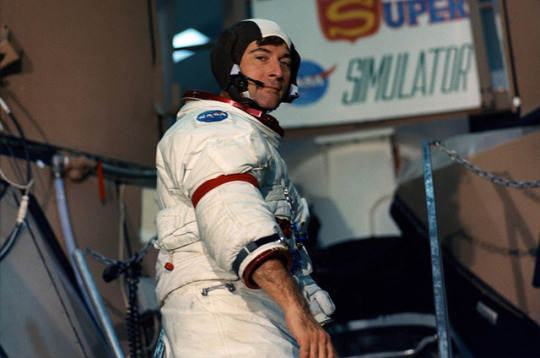

John Watts Young (September 24, 1930 – January 5, 2018)
I wasn’t around for the Apollo missions, but fondly remember John Young on the first shuttle flight. This one hurts. RIP John Young.
2K notes
·
View notes



